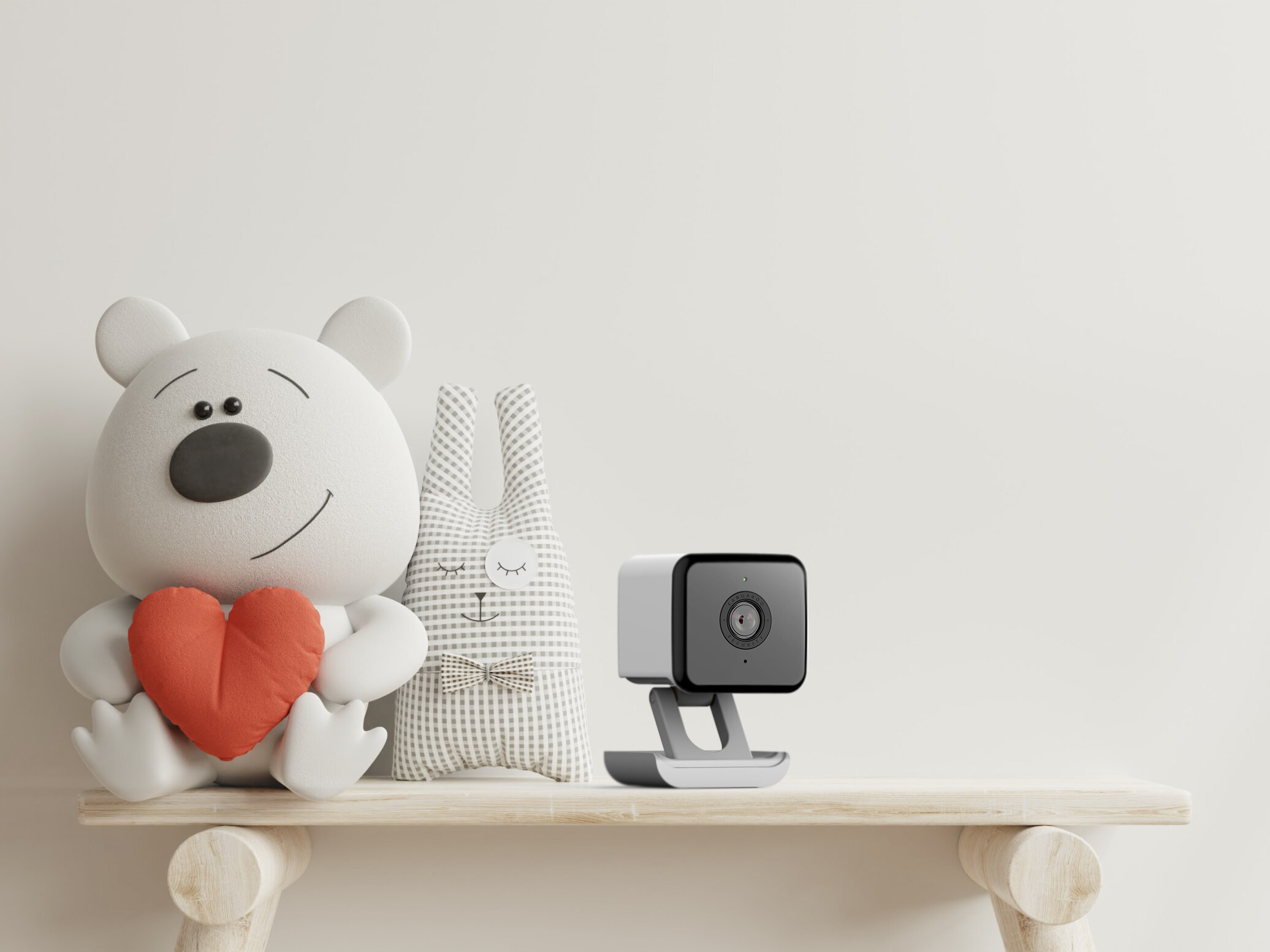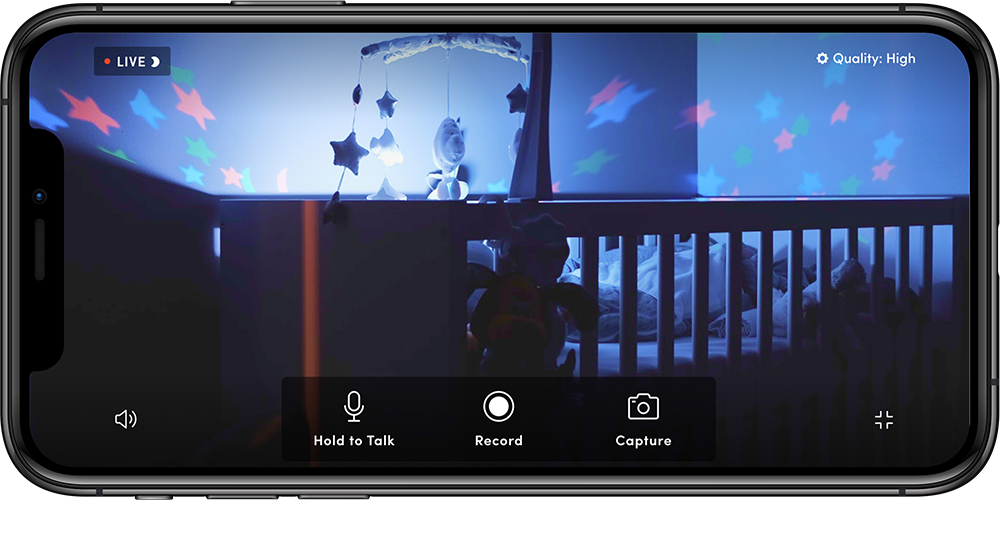Welcome Home, Little One: Why Home Security Matters More Than Ever
Congratulations on the arrival of your newest family member! Bringing a baby home is a joyous whirlwind that instantly shifts your priorities. Amidst the sleepless nights and precious cuddles, ensuring your home is a safe and secure environment becomes paramount. New parents often feel a heightened sense of responsibility, and knowing your home is protected provides invaluable peace of mind.
This guide is designed specifically for you – the new parent navigating this exciting chapter. We've created an essential checklist covering practical home security tips, from nursery safety and babyproofing basics to leveraging technology. Let's build a secure haven where your little one can grow and thrive safely.
Your Essential Home Security Checklist: A Step-by-Step Guide
1. Securing the Nursery and Sleep Areas: The Sanctuary
Your baby's room should be the safest space in the house.
Strategic Crib Placement: Position the crib away from windows (to avoid drafts, direct sun, and potential hazards like blind cords), heaters, lamps, heavy pictures, or shelves. Ensure no cords from monitors or other devices are within reach. Check that your crib meets current safety standards
Master Safe Sleep Practices: Always follow the ABCs of safe sleep: Baby should sleep Alone, on their Back, in a Crib, bassinet, or play yard. Use only a firm, flat mattress with a tightly fitted sheet. Remove all soft items – pillows, bumpers, blankets, stuffed animals – as they pose suffocation and SIDS risks
Invest in a Reliable Baby Monitor: A quality baby monitor (video and audio highly recommended) is a new parent essential. It allows you to check on your baby without disturbing them. Place the monitor where you have a clear view, but ensure the camera and its cords are well out of your baby's reach. Some modern monitors also track room temperature, which is vital as babies cannot regulate their body temperature well.
2. Comprehensive Baby Proofing: Preparing for Exploration
As your baby becomes mobile, their curiosity will lead them everywhere. Proactive babyproofing is key.
Anchor Heavy Furniture: Secure dressers, bookshelves, TV stands, and televisions to the wall using anti-tip straps or anchors. Tip-overs are a serious, preventable danger.
Cover Outlets & Manage Cords: Use sliding outlet covers or outlet plugs on all accessible electrical outlets. Secure loose cords from lamps, chargers, and electronics using cord shorteners or covers – these can be strangulation hazards.
Install Safety Gates: Use hardware-mounted gates at the top and bottom of stairs (never use pressure-mounted gates at the top of stairs). Use pressure-mounted gates or freestanding gates to block off potentially hazardous areas like kitchens, bathrooms, or home offices when needed.
Secure Cabinets and Drawers: Install safety latches or locks on cabinets and drawers containing cleaning supplies, medications, sharp objects, plastic bags, or anything potentially harmful.
Window Safety is Crucial: Install window guards on upper-floor windows (ensure they have an emergency release mechanism for adults) or window stops that prevent windows from opening more than a few inches. Keep furniture away from windows to prevent climbing. Ensure all blind cords are cut short or secured out of reach.
Perform Hazard Sweeps: Regularly get down on your hands and knees to see the world from your baby's perspective. Look for small objects (coins, buttons, batteries) that could be choking hazards, sharp corners on furniture (use corner guards), and other potential dangers.
3. Securing Doors, Windows, and Entry Points: Your First Line of Defense
Basic physical security is non-negotiable.
Strengthen Door Locks: Ensure all exterior doors have a high-quality deadbolt lock with at least a one-inch throw bolt. Reinforce the doorjamb and strike plate for added security.
Secure Windows: Check that all window locks function correctly. For easily accessible windows, consider adding secondary locks, security film, or sensors.
Don't Forget Sliding Doors: These can be vulnerable. Use a security bar (charley bar) in the track or install auxiliary foot locks or keyed locks.
Garage Door Security: Keep your garage door closed and locked, even when home. Treat the door connecting your garage to your house with the same level of security as your front door (deadbolt, solid core).
4. Essential Environmental Safety Devices: Protecting Against Invisible Threats
These devices alert you to dangers you might not see or smell.
Install & Test Smoke and Carbon Monoxide (CO) Detectors: You need working detectors on every level of your home, inside each bedroom, and outside sleeping areas. CO is odorless, colorless, and especially dangerous for infants. Test detectors monthly, replace batteries annually (unless they are 10-year sealed units), and replace the entire detector every 7-10 years according to manufacturer instructions.
Keep a Fire Extinguisher Handy: Have at least one multi-purpose fire extinguisher in an accessible location (like the kitchen) and ensure you know how to use it (P.A.S.S. method: Pull, Aim, Squeeze, Sweep).
5. Leveraging Technology for Enhanced Safety & Peace of Mind
Modern tech offers powerful tools for new parents.
Security Cameras (Indoor & Outdoor): Strategically placed cameras provide visibility and reassurance. Indoor cameras can help you monitor naptime or check on a caregiver, while outdoor cameras watch over your property's perimeter and entry points. Look for features beneficial to parents, like night vision, two-way audio (to soothe baby remotely or communicate with someone at home), and motion detection alerts sent to your phone. For instance, versatile systems like the Kangaroo Indoor + Outdoor Camera offer these features and secure cloud storage options, allowing remote viewing via an app.
Video Doorbells: See and communicate with whoever is at your door without opening it. This is invaluable when you're home alone with the baby, sleep-deprived, or simply want to screen visitors safely.
Smart Home Integration: Consider smart sensors for doors and windows that alert you if they are opened unexpectedly. Smart lighting can be programmed to turn on and off, deterring potential intruders when you're away or automatically illuminating hallways for those late-night feedings.
6. Managing Visitors and Deliveries Safely
Be cautious about unexpected knocks.
Verify Before Opening: Always use the peephole or video doorbell to identify visitors before unlocking the door. It's okay not to answer if you feel uncomfortable or are busy with the baby.
Secure Deliveries: Instruct delivery personnel to leave packages in a specific, less visible spot if you can't get to the door immediately. Consider a lockbox for valuable deliveries.
7. Creating and Practicing an Emergency Plan: Be Prepared
Knowing what to do in an emergency reduces panic and saves precious time.
Post Emergency Contacts: Keep a clearly visible list of important numbers: 911 (or local equivalent), pediatrician, poison control, emergency contacts (family/friends), and your home address.
Plan Escape Routes: Identify two ways out of every room and practice fire escape routes with your family (if applicable).
Designate a Meeting Place: Choose a safe spot outside your home where everyone knows to gather after evacuating.
Assemble a First Aid Kit: Keep a well-stocked infant/child first aid kit easily accessible and know basic infant first aid.
Maintaining Your Secure Environment: An Ongoing Process
Home security isn't a "set it and forget it" task, especially with a growing child.
Perform Regular Checks: Monthly, test smoke/CO detectors. Periodically review camera footage and angles. Inspect locks and window guards. Most importantly, re-evaluate potential hazards as your baby reaches new milestones like crawling, pulling up, and walking – their reach and abilities change rapidly!
Brief Caregivers: Ensure anyone watching your baby (grandparents, babysitters) understands the safety rules, knows how to use safety devices, and is familiar with your emergency plan.
Peace of Mind: The Ultimate Goal
Implementing these home security measures is about more than just physical protection; it's about creating a space where you can relax and focus on bonding with your baby, knowing you've taken steps to keep them safe. Remember to also prioritize your own well-being. Accepting help and getting rest when possible keeps you more alert and better equipped to handle the demands of parenthood – which indirectly contributes to a safer home environment.
Ready to Create Your Safe Haven? Take the First Step Today!
Protecting your new baby feels like the most important job in the world – because it is. Don't feel like you need to do everything at once. Start small and build momentum.
Tonight: Double-check your baby's sleep space for safety hazards.
This Weekend: Test all your smoke and CO detectors.
Next Step: Choose one area for babyproofing, like securing cabinets in the kitchen.
Looking for smart, simple ways to enhance your home monitoring? Explore versatile and affordable solutions like the Kangaroo Indoor + Outdoor Camera and our Security Kits designed to provide an extra layer of security and precious peace of mind.
Consider reliable cloud storage like Kangaroo's Protect Plans to ensure you never miss capturing important moments or security events, safely stored and accessible anytime.
What's your number one home security tip for fellow new parents? Share it in the comments below!




